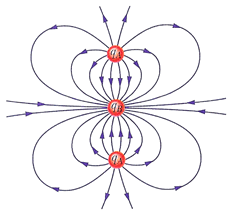



Fig. 2 shows several single particle wave functions projected on the long axis of a CdSe nanorod with an aspect ratio of 7 1/2. A real-space grid was used to represent the wave functions, and the filter-diagonalization method ( 25) was used to extract the states near the valence (conduction) band maximum (minimum). To calculate the absorption spectrum of the nanorod subject to such a field, one requires as input the orbitals and orbital energies that were obtained from a screened pseudopotential approach ( 23, 24). It may be possible, however, to enhance such forbidden transitions by taking advantage of the high wave vector k of nanostructured fields, especially through localized surface plasmon resonances ( 16– 18). r) -2( l-1) relative to the dipole-allowed transition.Transitions of higher multipolar order ( l = 3,4,…) have even lower strengths ∼( k r) -2 ∼ 10 6, where k is the wave vector of the excitation.Consequently, the strength of a quadrupole transition is smaller than that of a dipole-allowed transition by a factor of ( r/ λ) -2 or ( k Such gradients approach zero in a far-field. Unlike the allowed electric dipole transition, the strength of which relies only on the intensity of the electric field, an electric quadrupole transition requires an electric field gradient across the extent of the molecule ( 3). We focused on the most fundamental form of light-matter interaction, electronic absorption spectroscopy, and theoretically demonstrated the possibility of manipulating the fundamental selection rules of electronic absorption by using nanostructured electromagnetic fields ( 15). Common examples include electric quadrupole ( q), magnetic dipole ( m), and coupled electric dipole-magnetic dipole excitations ( μ The latter is commonly postulated in the form of the electric dipole selection rule ( 4) however, a range of transitions that are important for spectroscopies such as circular dichroism, Raman scattering, Raman optical activity, singlet-triplet transitions, and magneto-optical phenomena are forbidden in an electric far-field. In this limit, the electric field can excite only those transitions that involve the induction of an electric dipole moment across the molecule, which is assumed to be a point ( 3). Spatial variations of this field across the molecule are neglected in the far-field limit. Because the size ( r) of a molecule is 10 3 times smaller than the wavelength ( λ) of the light, it is common to approximate that a molecule subjected to light experiences a uniform electric field ( 1, 2). Electronic and vibrational transitions excited by the electromagnetic (EM) field of light involve the motion of electrons and atoms on the length scale of 1 Å, the typical size of a molecule. Light-matter interactions that govern most forms of spectroscopy, light harvesting, optical imaging, photodetection, optical communications, and data storage are conceptually founded on the laws of far-field optics ( 1, 2).


 0 kommentar(er)
0 kommentar(er)
